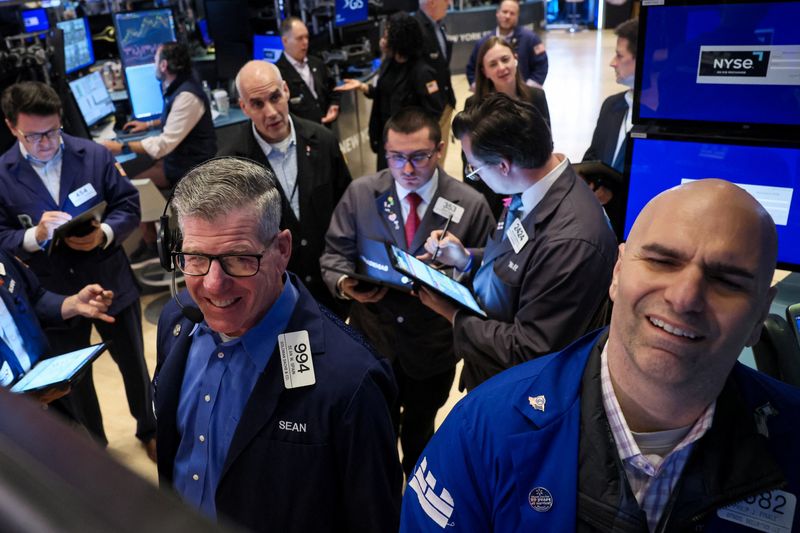A look at the day ahead in U.S. and global markets from Mike Dolan
With a still-powerful "buy the dip" instinct in stocks, U.S. markets are having a rare bout of jitters about a slowing economy - with Treasury yields, the dollar and oil prices all swooning over the past 24 hours.
Wall Street's tech-led "bounce-ability" was on display again on Monday as the S&P500 clawed back sharp intra-day losses to close higher on the day.
But the rates, currency and commodities complex is riffing heavily off further signs of a sharp U.S. factory slowdown.
While an economic stumble at this stage could be a double-edged sword for near-record high stocks - twinning the earnings implications with the higher chance of lower Federal Reserve rates - the push-pull could continue up to this week's key employment report at least.
S&P500 futures are back in the red ahead of Tuesday's open, with stock losses across most of Asia and Europe today too.
On Monday, the ISM's latest U.S. manufacturing survey showed a deeper contraction in May activity than forecast, amplifying similarly stark readings from Chicago's equivalent factory poll late last week and signs of an erosion of household spending in April to boot.
The combination has been enough to drag the Atlanta Fed's real-time "GDPNow" estimate back down as low as 1.8% - from as high 3.5% a week ago and more than 4% in mid-May and its lowest reading all year.
The week's big labor market soundings get underway later on Tuesday with April job openings data.
Full-year Fed rate cut expectations have now crept back above 40 basis points (bps) - almost 10 bps higher than a week ago.
Both driven by and feeding off a post-OPEC slide in crude oil prices - itself a casualty of the manufacturing anxiety - 10-year Treasury yields fell back to their lowest in almost three weeks. Oil prices snowballed further on Tuesday to their lowest since Feb. 6 - bringing year-on-year gains back below 2% for the first time in three months.
And the 25 bps pullback in 10-year yields over the past week has been enough to zap the newly re-emerged "term premium" on long-term debt holdings back below zero again.
ELECTION RESULTS
The dollar was also a victim, with its DXY index falling to the its lowest level in almost two months before steadying. The euro briefly hit its highest since mid-March ahead of this week's widely-expected European Central Bank interest rate cut, while dollar/yen recoiled to 155 for the first time since May 16.
Checking the dollar's fall more broadly, however, has been an ongoing slide in Mexico's peso, a recoil in India's rupee and renewed losses in South Africa's rand after election results this week in all three countries.
The rupee fell sharply to a three-week low as provisional results in India's protracted election showed Narendra Modi's BJP-led alliance was well short of the super-majority weekend exit polls had suggested.
But the real hit was to Indian stocks, which tanked more than 8% in the biggest loss in more than four years - after hopes on Monday of major reforms and spending in the event of a two-thirds majority parliamentary were doused and knocked the market back from record highs.
The peso, meantime, has racked up losses of up to 5% since Friday after Claudia Sheinbaum's presidential election win and near-super majority for the left-wing Morena party. The concern surrounds possible constitutional changes that could occur as well as an apparent free rein on public spending.
Key diary items that may provide direction to U.S. markets later on Tuesday:

* US April job openings, April factory goods orders
* US corporate earnings: Hewlett Packard Enterprise (NYSE:HPE), Bath & Body Works (NYSE:BBWI)
(By Mike Dolan, editing by Alex Richardson mike.dolan@thomsonreuters.com)